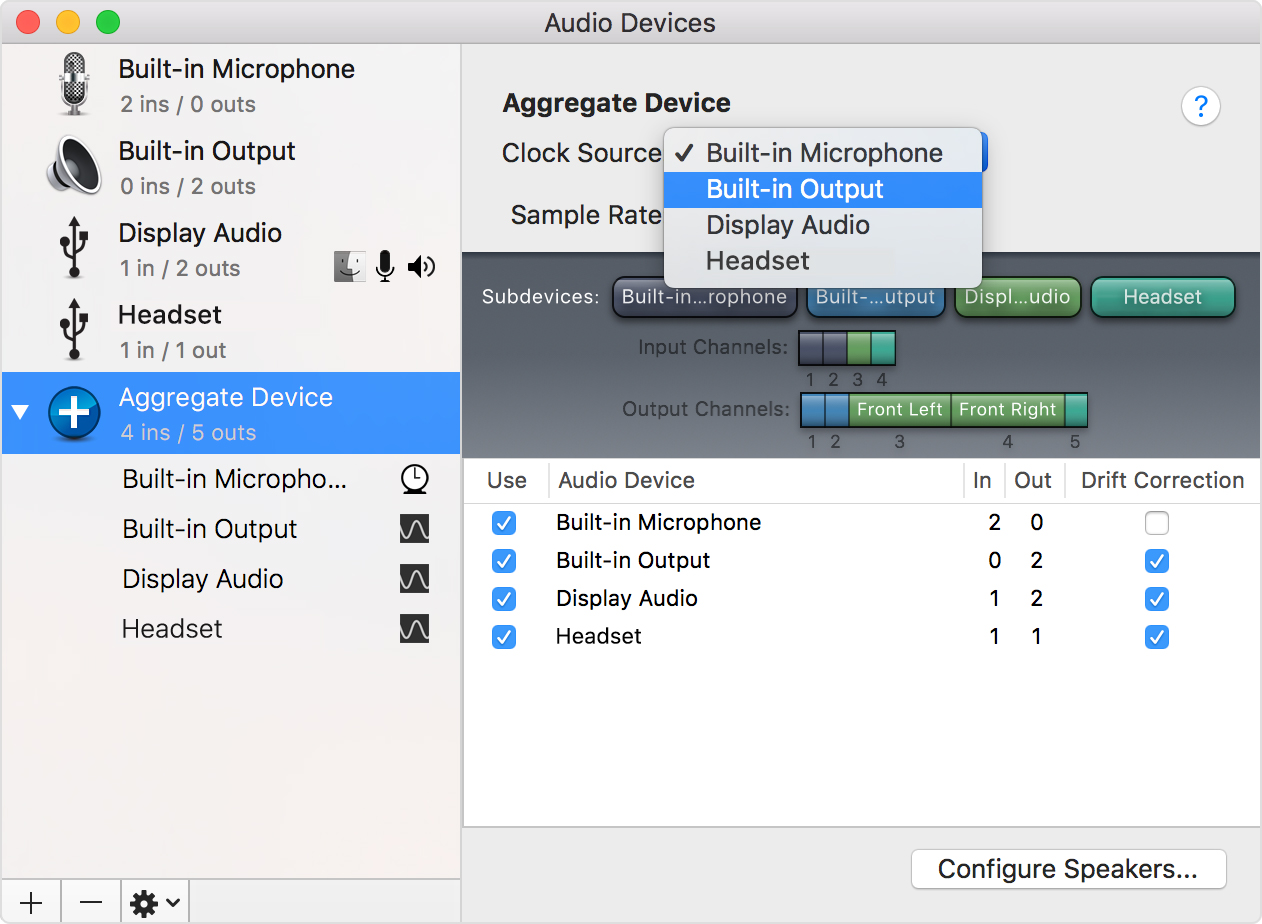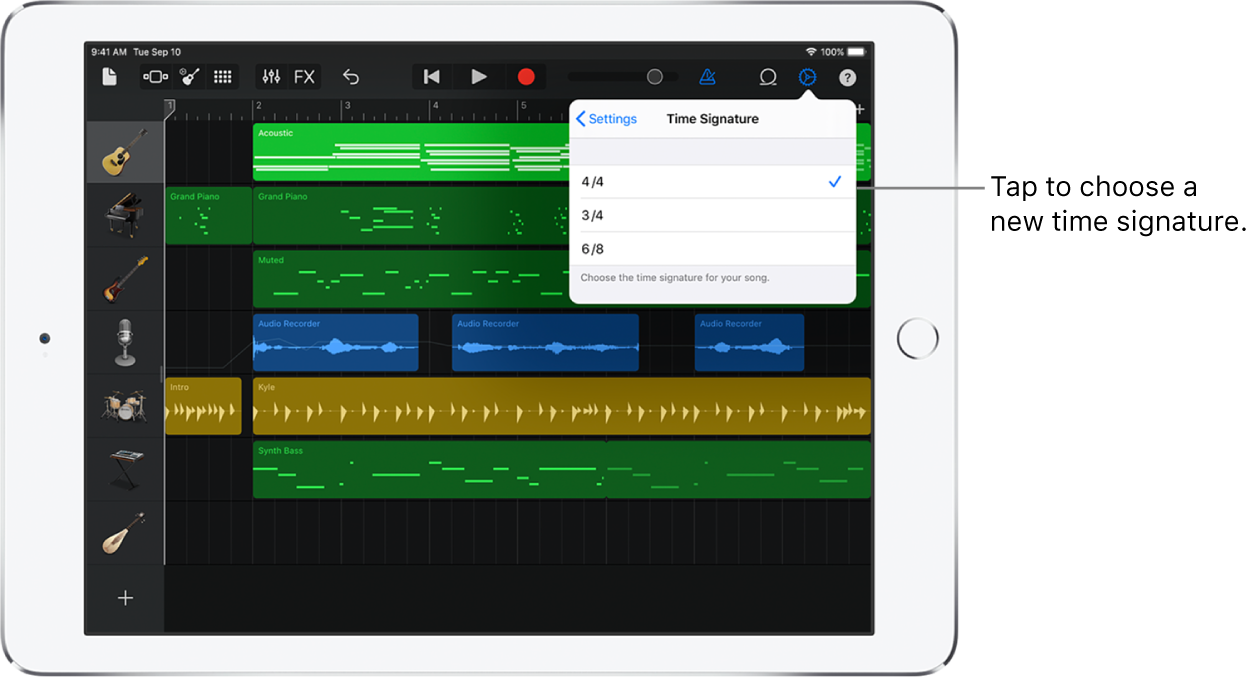
Aug 10, 2013 This video via MusicAppBlog’s John Walden, takes a look at how to setup a wireless MIDI connection between your iPad and a Windows PC desktop computer. If your a Mac user, see this tutorial on how to setup wireless MIDI between an iPad and Mac OS X. Question: Q: Garageband midi clock to looping pedal. What i want to do. Send the midi clock from garage band to an external loop pedal (pigtronix infinity) How i think i would accomplish this. Ipad new / lightning to USB adapter / (usb cable) / Zoom u24 (midi out) / (midi cable) / pigtronix infinity looper (midi in).
GarageBand User Guide for iPad
Every GarageBand song has settings for the metronome and count-in, as well as the song tempo (speed), key, and time signature, which you can change at any time. You can also add an automatic fade-out.
Open the song settings
Change the metronome settings
GarageBand has a metronome to help you play and record in time. The metronome includes a count-in that plays before recording starts, to help you get ready. When the visual count-in is turned on, the metronome displays the beat of the count-in. In the song settings, you can turn the count-in on or off, and change the sound of the metronome.
Open the song settings, then tap Metronome and Count-in.
To turn the count-in on or off, tap the Count In switch. When the count-in is on, you can turn the visual count-in on or off by tapping the Visual Count-in switch.
To change the sound for the metronome, choose a new metronome sound from the list.
To change the volume of the metronome, drag the Metronome Level slider left or right.
Change the tempo of a song
Each song has a tempo (speed) that lasts for the entire song. You can change the tempo when either a Touch Instrument or Tracks view is open.
Open the song settings, then tap Tempo to show the tempo controls.
Do one of the following:
Set the tempo: Tap the tempo bar repeatedly.
Change the tempo incrementally: Tap the up or down arrow next to the tempo number. You can swipe vertically to change it in larger steps.
When you change the tempo of a song, recordings from Touch Instruments (except the Audio Recorder and Amp) change to match the new tempo. Apple Loops also change to match the new tempo.
Change the key of a song
Each song has a key that lasts for the entire song. You can change the key in any Touch Instrument or in Tracks view.
Open the song settings, tap Key, then tap a new key. You can also select a different scale (major or minor).
When you change the key of a song, recordings from Touch Instruments (except the Audio Recorder and Amp) change to match the new key. Apple Loops also change to match the new key.
Turn off Follow Song Key for recordings and loops
By default, when you change the key of a song, the recordings and loops in the song change to match the new key (except Audio Recorder and Amp recordings). You can turn off this setting if you want to try out different keys without changing the recordings and loops in the song.
Open the song settings, then turn Follow Song Key off.
Tap Follow Song Key again to turn it on.
Change the time signature of a song
Each song has a time signature that lasts for the entire song. You can change the time signature in any Touch Instrument or in Tracks view.
Open the song settings, tap Time Signature, then tap a new time signature.
When you change the time signature of a song, existing recordings and loops in the song do not change.
Add a fade-out
You can add an automatic fade-out to the end of a song. When you turn on Fade Out, the last ten seconds of the song fade to silence. If you extend the last section by adding or moving regions, the fade-out adjusts to the new end of the song. You hear the fade-out when you play or share the song, but not while recording.
Open the song settings.
Turn Fade Out on.
Tap Fade Out again to turn off the automatic fade-out.
Use 24-bit audio

When 24-bit audio is turned on, GarageBand records, mixes, and exports audio in 24-bit resolution. 24-bit audio uses more storage space, but provides higher resolution for audio editing.
Open the song settings, then tap Advanced.
Turn 24-bit Audio Resolution on.
Send tempo information to music apps and MIDI devices
You can use MIDI clock to sync other music apps or MIDI devices to the tempo used in GarageBand when playing or recording.
Open the song settings, then tap Advanced.
Turn Send MIDI Clock on.
When you use Live Loops, MIDI clock is only sent when recording or playing back a Live Loops performance.
As one of the last of its own apps to get an update for iOS 8, Apple has now updated its GarageBand app for iPhone and iPad with support for the new operating system and more.
On top of the expected iOS 8 support, the app also gains MIDI over Bluetooth support, which means compatible MIDI keyboards, DJ controllers and other MIDI-based instruments can now connect wirelessly and send MIDI data to the app over Bluetooth LE. We first told you about Apple’s new MIDI over Bluetooth support in iOS 8 and coming soon in OS X Yosemite, which will also allow users to advertise their device as a MIDI device for sending MIDI from virtual apps on either OS to the other.
Also new for GarageBand is iCloud Drive compatibility, although developers have warned users to avoid upgrading to the feature before the release of OS X Yosemite.

Garageband Midi Input
Lastly, the app adds the ability to “Toggle the metronome on and off directly from the control bar.”
Garageband Send Midi Clock
The updated GarageBand is available on the App Store now.
Garageband Ios Send Midi Clock
FTC: We use income earning auto affiliate links.More.